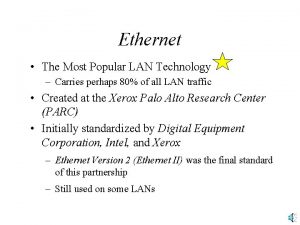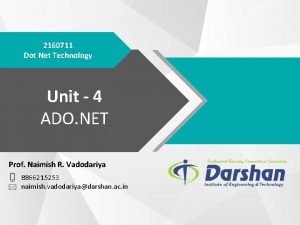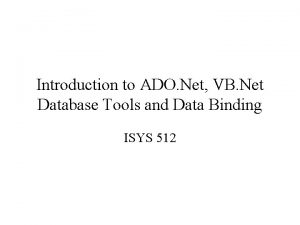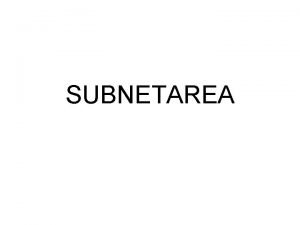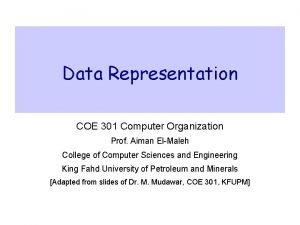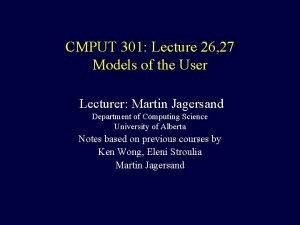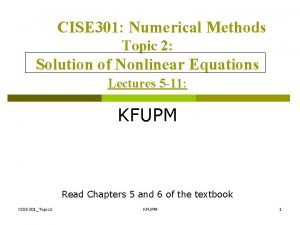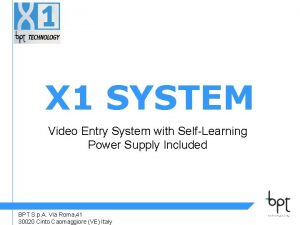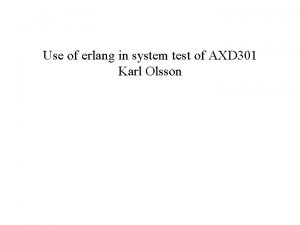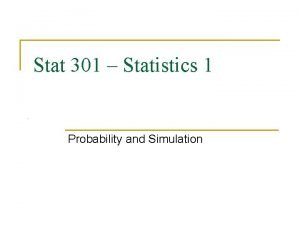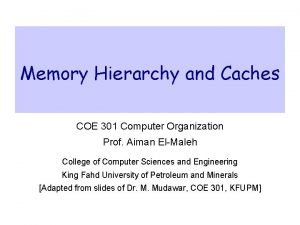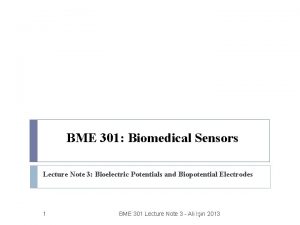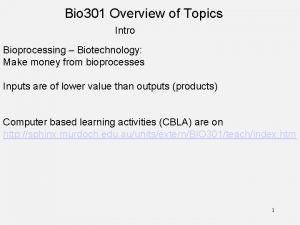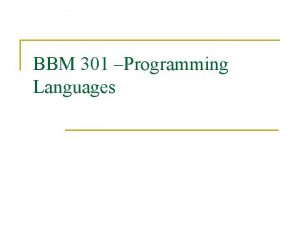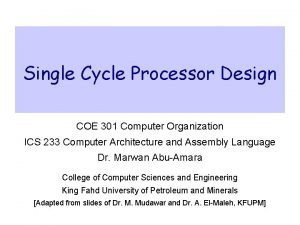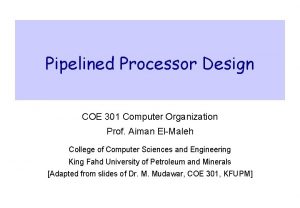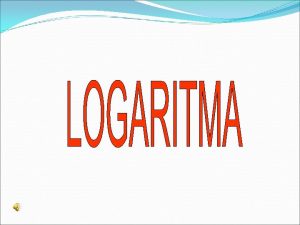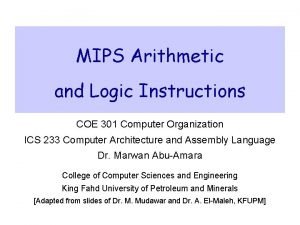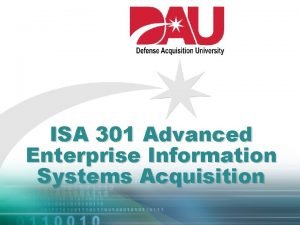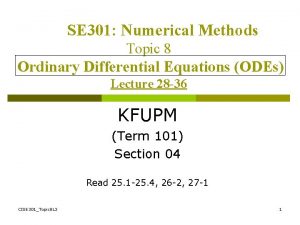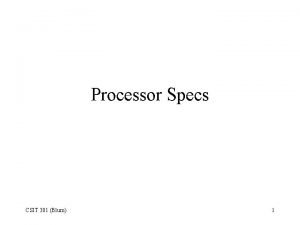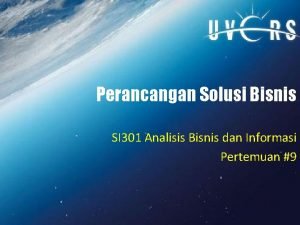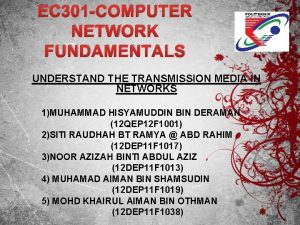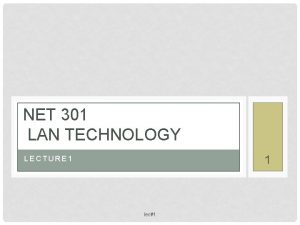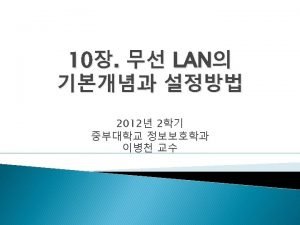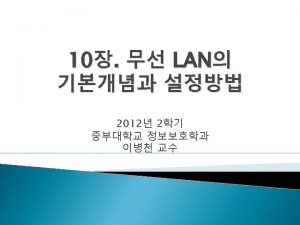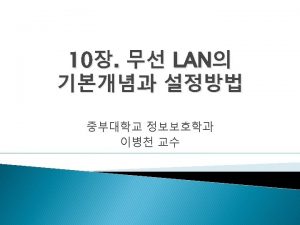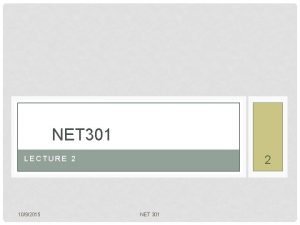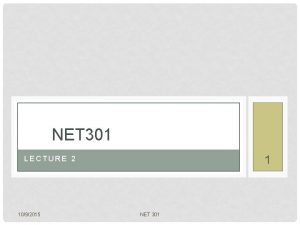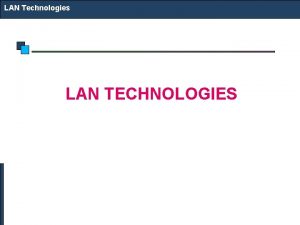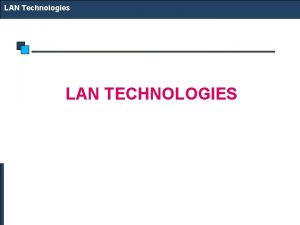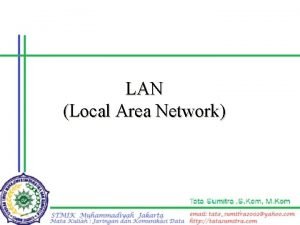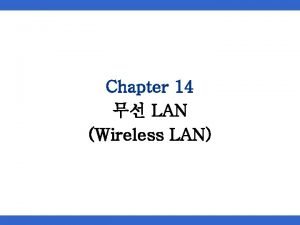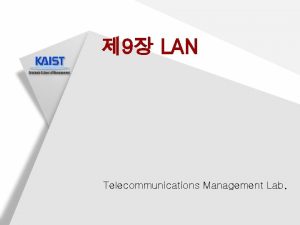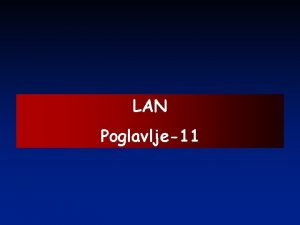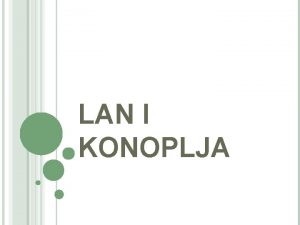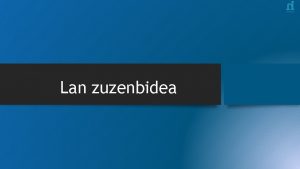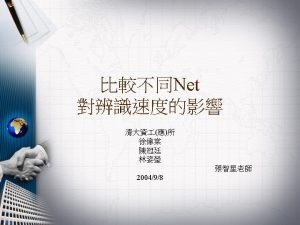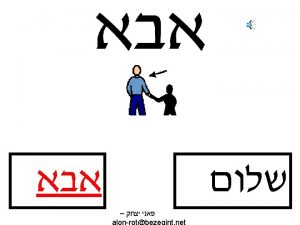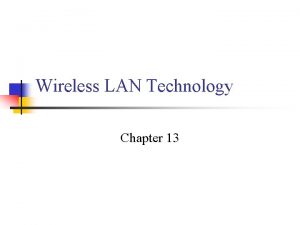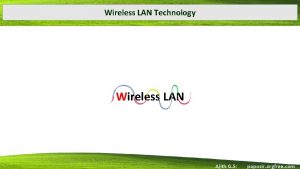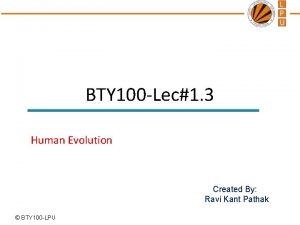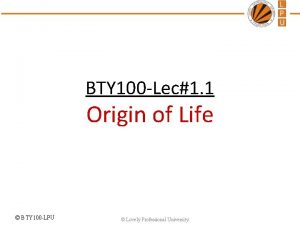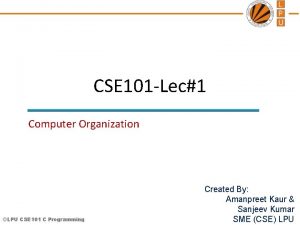NET 301 LAN TECHNOLOGY 1 LECTURE 1 lec1








































- Slides: 40

NET 301 LAN TECHNOLOGY 1 LECTURE 1 lec#1

REVISION • Computer networks • Networks advantages. (Recourse sharing, programs updating , e- commerce. . ) • Networks classification (size, topology) lec#1 2

REVISION • LAN networks • Client/server (terminal pc / speed , storage, process ) • Peer to peer network ( client pcs or workstations ) • Home network. lec#1 3

NETWORK ARCHITECTURE • Defines: • Layers. • Interface: interconnection and service transmit between layers within one device • Protocols: procedures and rules that define and governed service of one layer to the one. between layers in different devices. lec#1 4

LAYERS, PROTOCOLS & INTERFACES Layer n/n+1 interface Layer n protocol Layer n/n+1 interface Layer n-1/n interface Layer 2/3 interface Layer 2 Layer 1/2 interface Layer 1 Layer n-1/n interface Layer 2 protocol Layer 1 protocol Layer 2/3 interface Layer 2 Layer 1/2 interface Layer 1 Physical communications medium lec#1 5

LAN MODEL & ARCHITECTURE • Network architecture includes • Access methodology • Physical and logical topology • Media choice lec#1 6

ACCESS METHOD • Since many users have to send requests onto the shared LAN media at the same time, there must be some way to control access by multiple users to that media. These media-sharing methods are named “Access methodologies”. • There are two access controlling methods: 1 - CSMA/CD 2 -Token Passing lec#1 7

CSMA/CD • Carrier Sense Multiple Access with Collision Detection • It is based on the philosophy: “Let’s just let everyone onto the media whenever they want & if two users access the media at the same time, we’ll work it out somehow. ” lec#1 8

TOPOLOGY • Logical • Sequential • Broadcast • Physical • Bus. • Token Ring. • Star. lec#1 9

LOGICAL TOPOLOGY • This passing technology is known as “Logical Topology”. • A logical topology is how devices appear connected to the user. A physical topology is how they are actually interconnected with wires and cables. • Logical topologies are bound to network protocols and describe how data are moved across the network. • There are two known logical topologies: 1 - Sequential 2 - Broadcast lec#1 10

SEQUENTIAL TOPOLOGY • Also known as “ring logical topology”. • The data is passed from one PC (or node) to another. • Each node examines the destination address of the data packet to determine if this packet is meant for it. • If the data was not meant to be delivered at this node, the data packet is passed along to another node in the logical ring. lec#1 11

BROADCAST TOPOLOGY • Also known as “bus logical topology”. • A data message is sent simultaneously to all nodes on the network. • Each node decides individually if the data message was directed toward it. If not, the message is ignored. • No need to pass the message to a neighboring node. lec#1 12

PHYSICAL TOPOLOGY • The clients & servers must be physically connected to each other according to some configuration & be linked by the shared media of choice. • The physical layout configuration can have a significant impact on LAN performance & reliability. • There are three main physical topologies: 1 - Bus 2 - Ring 3 -Star lec#1 13

THE OSI REFERENCE MODEL • OSI Reference Model – an internationally standardised network architecture. • An abstract representation of an ideal network protocol stack; not used in real networks. • OSI = Open Systems Interconnection. • Model has 7 layers. lec#1 14

THE OSI MODEL Layer 7 Application Layer 6 Presentation Layer 5 Session Layer 4 Transport Layer 3 Network Layer 2 Data Link Layer 1 Physical Layer lec#1 15

LOWER/UPPER LAYERS • Layers 1 -4 often referred to as lower layers. • Layers 5 -7 are the upper layers. • Lower layers relate more closely to the communications technology. • Layers 1 – 3 manage the communications subnet. • the entire set of communications nodes required to manage massages between a pair of machines. • Layers 4 – 7 are true ‘end-to-end’ protocols. • Upper layers relate to application. lec#1 16

lec#1 17

lec#1 18

LAYER 7: APPLICATION LAYER • Home to wide variety of protocols for specific user needs, e. g. : • • virtual terminal service, file transfer, electronic mail, directory services. lec#1 19

LAYER 6: PRESENTATION LAYER • Concerned with representation of transmitted data. • Deals with different data representations. • ASCII or EBCDIC, • byte ordering conventions, • Also deals with data compression. lec#1 20

LAYER 5: SESSION LAYER • Allows establishment of sessions between machines, e. g. to • allow remote logins • provide file transfer service. lec#1 21

LAYER 4: TRANSPORT LAYER • Basic function is to take data from Session Layer, split it up into smaller units, and ensure that the units arrive correctly. • Concerned with efficient provision of service. lec#1 22

LAYER 3: NETWORK LAYER • Key responsibility is control of routing in the subnet. lec#1 23

LAYER 2: DATA LINK LAYER • Provides reliable, error-free service on top of raw Layer 1 service. • Breaks data into frames lec#1 24

LAYER 1: PHYSICAL LAYER • Concerned with bit transmission over physical channel. • Issues include: • definition of 0/1, lec#1 25

ETHERNET • Functionality • Access method: CSMA/CD • Logical topology: broadcast • Physical topology: bus or star • Ethernet II • • • Header (preamble) for synchronizing Destination & source address (MAC layer address) Type field for network protocol Data field Frame check sequence (FCS): CRC-32 • IEEE 802. 3 replace type field with length field lec#1 26

ETHERNET II AND IEEE 802. 3 STANDARDS Purpose of preamble is MAC layer addresses. Which network Contains protocols all Error of the detection to alert and synchronize First 3 octets identify are used, the e. g. , encapsulated for IPX/ mechanism upper generated contains upper layer Indicates the of by all the Ethernet NIC to the manufacturer (assigned SPX protocol by length layer it Itwill (Network be thethrough transmitting embedded protocols the variable-length LLC Ethernet incoming data. IEEE). Next 3 are 8137 H, unique for TCP/IP Application) protocols. NIC. with 32 -bit the from data. CRC data field. 0800 H. address for each protocols NIC. Vary 46 toover 1500. the address, type, and data fields. lec#1 27

STANDARDS ORGANIZATION • is any organization whose primary activities are developing, coordinating, revising, amending, reissuing, interpreting, or otherwise producing technical standards that are intended to address the needs of some relatively wide base of affected adopters. lec#1 28

STANDARDS ORGANIZATION • Most standards are voluntary in the sense that they are offered for adoption by people or industry without being mandated in law. Some standards become mandatory when they are adopted by regulators as legal requirements in particular domains. lec#1 29

• The term de jure standard refers to a standard mandated by legal requirements or refers generally to any formal standard. In contrast, the term de facto standard refers to a specification (or protocol or technology) that has achieved widespread use and acceptance – often without being approved by any standards organization (or receiving such approval only after it already has achieved widespread use) lec#1 30

INTERNATIONAL ORGANIZATION FOR STANDARDIZATION - ISO • is the world’s largest developer of voluntary International Standards give state of the art specifications for products, services and good practice, helping to make industry more efficient and effective. Developed through global consensus, they help to break down barriers to international trade. lec#1 31

ITU- TELECOMMUNICATION STANDARDIZATION SECTOR (ITU-T • it coordinates standards for telecommunications. • The ITU organization established as a permanent agency of the United Nations, in which governments are the primary members although other organizations (such as non-governmental organizations and individual companies) can also hold a form of direct membership status in the ITU as well. • Standards and recommendations for networks and communications * ITU-T Recommendation lec#1 32

• Data transmission • is the physical transfer of data (a digital bit stream) over a point-to-point or point-to -multipoint communication channel. Examples of such channels are copper wires, optical fibres and wireless communication channels • data are represented as an electromagnetic signal such as an electrical voltage, radio wave, microwave, or infrared signal • Telecommunication services • telecommunications service is a service provided by a telecommunications provider, or a specified set of user-information transfer capabilities provided to a group of users by a telecommunications system. • Integrated Service Digital Network • is a set of communication standards for simultaneous digital transmission of voice, video, data, and other network services over the traditional circuits of the public switched telephone network lec#1 33

AMERICAN NATIONAL STANDARDS INSTITUTE - ANSI • the Institute is private, non-profitable membership organization supported by a diverse constituency of private and public sector organizations. • ANSI has maintained as its primary goal the enhancement of global competitiveness of U. S. business and the American quality of life by promoting and facilitating voluntary consensus standards and conformity assessment systems and promoting their integrity. lec#1 34

• These standards ensure that the characteristics and performance of products are consistent, that people use the same definitions and terms, and that products are tested the same way. ANSI also accredits organizations that carry out product or personnel certification in accordance with requirements defined in international standards • ASCII code for encoding English alphabets lec#1 35

INSTITUTE OF ELECTRICAL AND ELECTRONICS ENGINEERS - IEEE • Pronounced as: I-Triple-E. • that is dedicated to advancing technological innovation and excellence. It has about 425, 000 members in about 160 countries, slightly less than half of whom reside in the United States. • IEEE 802 standards for networks lec#1 36

ELECTRONIC INDUSTRIAL ASSOCIATION EIA • comprises individual organizations that together have agreed on certain data transmission standards • EIA/TIA-232 lec#1 37

THE EUROPEAN TELECOMMUNICATIONS STANDARDS INSTITUTE • Independent, Non-profitable institution. • Consists of telecommunication , producing companies, users , organizations, equipment makers and network operators to develop and produce systems and telecommunication standards in Europe. lec#1 38

OTHER ORGANIZATIONS • Asynchronous Transfer Mode : ATM Forum • International, non-profitable companies concerned in ATM switches used in WAN and fast LAN. • Specifications and standards for those switches. lec#1 39

ETHERNET FORUM • Ethernet standards. • Giga Ethernet. • gigabit Ethernet (Gb. E or 1 Gig. E) is a term describing various technologies for transmitting Ethernet frames at a rate of a gigabit per second as defined by the IEEE 802. 3 -2008 standard. It came into use beginning in 1999, gradually supplanting Fast Ethernet in wired local networks, where it performed considerably faster. • Ethernet Allianc. lec#1 40
 01:640:244 lecture notes - lecture 15: plat, idah, farad
01:640:244 lecture notes - lecture 15: plat, idah, farad Most popular lan technology
Most popular lan technology 2160711
2160711 Achmed lach net
Achmed lach net Ado.net vb.net
Ado.net vb.net Sa se imparta numarul 301
Sa se imparta numarul 301 Log50-log5+2log2
Log50-log5+2log2 Coe 301 kfupm
Coe 301 kfupm Cont 301
Cont 301 Cmnalle/301
Cmnalle/301 Cmput 301
Cmput 301 Saddleback shape
Saddleback shape When to stop iterations in bisection method
When to stop iterations in bisection method X** video
X** video Axd301
Axd301 Cpe 301 unr
Cpe 301 unr Infinera tm-301
Infinera tm-301 Stat 301
Stat 301 Stat 301
Stat 301 Access memory
Access memory Havera um dia que estarei cansado
Havera um dia que estarei cansado Edu 301
Edu 301 Bme 301
Bme 301 Bio 301
Bio 301 Bbm301
Bbm301 4 cs health and safety
4 cs health and safety Coe 301 kfupm
Coe 301 kfupm Coe 301 kfupm
Coe 301 kfupm Log 3 = 0 477 dan log 2 = 0 301 nilai log 18 = .... *
Log 3 = 0 477 dan log 2 = 0 301 nilai log 18 = .... * 2 log 84
2 log 84 Instruction format
Instruction format Isa 301
Isa 301 Bme
Bme Grundfos mi 301 firmware update
Grundfos mi 301 firmware update Ccna 200-301 slides
Ccna 200-301 slides Jika log 2 = 0 301 nilai log 32 =
Jika log 2 = 0 301 nilai log 32 = Heun's method formula
Heun's method formula Perpat 301
Perpat 301 Si-301
Si-301 Comp 301
Comp 301 Ec 301
Ec 301

